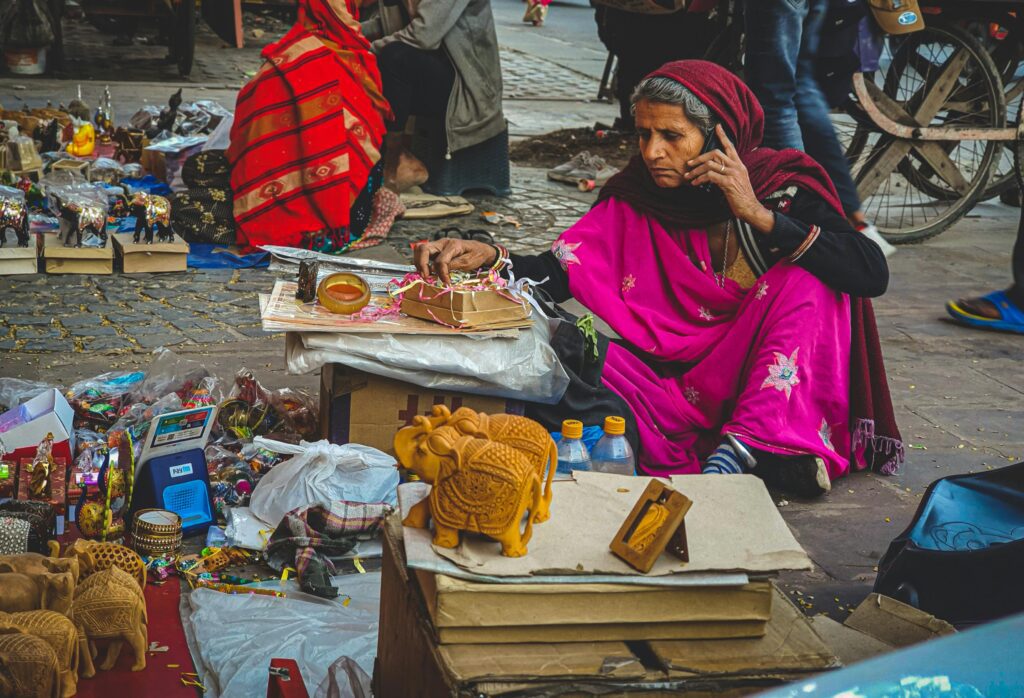
Table of Contents
Introduction
Rajasthan, the land of kings, is among the liveliest of India’s states, renowned all over the world for its tradition, heritage, and artistic excellence.
Rajasthan Handicrafts form the core of this heritage, an example of timeless creativity that spans generations. The vibrant bazaars of Jaipur, Jodhpur, Udaipur, and other towns are abuzz with intricate patterns, handcrafted articles, and works of art that symbolize centuries of expertise and innovation.
From pottery bearing Persian influences to natural-colored dyed textiles, from intricate marble carvings to royal jewelry, Rajasthan Handicrafts narrate tales of royalty, spirituality, and everyday life.
In contrast to machine-made items, these treasures reflect patience, devotion, and skill, which make them an integral part of Indian cultural identity.
What makes Rajasthan Handicrafts unique is not only their beauty but their utility as well.
Many of them have everyday uses in the home, while others are used for religious or ceremonial purposes.
Over time, these crafts have come to symbolize India’s soft power, attracting tourists, collectors, and art connoisseurs from all over the world.
The assortment of arts & crafts of Rajasthan is simply fascinating. Every area has evolved its own distinct design, as guided by geography, history, and patronage by kings and nobles.
Whereas Jaipur is renowned for blue pottery and jewelry, Udaipur excels in miniature paintings, Jodhpur flourishes in wooden crafts and leather work, and Barmer and Jaisalmer are famous for embroidery and textiles.
Here, we take a look at ten of Rajasthan’s most popular handicrafts, a reflection of its royal past. They are not mere objects of beauty but living traditions that continue to support artisans and promote cultural pride.
Rajasthan Handicrafts History and Heritage
The past of Rajasthan Handicrafts dates back several centuries and has been influenced by a blend of Rajputana courage, Mughal elegance, and tribal imagination.
The Rajput kings were warriors but also voracious patrons of art. They commissioned artisans from all over India and other countries to come to their kingdoms and settle there, giving them protection and royal patronage.
This patronage resulted in the resurgence of arts & crafts across various cities.
The influence of the Mughals, particularly in the 16th and 17th centuries, enhanced techniques in jewelry art, miniature painting, and textile art. Tribal populations, conversely, brought forth bold designs, natural colors, and nature- and folklore-inspired motifs.
The severe desert climate of Rajasthan also influenced its crafts. Since there were not many natural resources, artisans had to use special techniques to create sturdy yet beautiful items.
Camel leather, for example, was used to create footwear, lamps, and ornamented objects, while local clays were processed into blue pottery.
Palaces, forts, and temples became displays of Rajasthan Handicrafts. Delicate marble work in Dilwara temples, vibrant frescoes in Shekhawati havelis, and exquisite jewelry of Rajput queens all reflect how much handicrafts were integral to daily life and ceremonies.
These works did not stop at luxury but found their way into household products such as utensils, furniture, and textiles.
Today, these well-known handicrafts are not merely cultural icons.
They are also economic lifelines for thousands of artisans who are still employing traditional methods in villages and towns. Even in the face of modernization and machine-made competition, Rajasthan remains a proud guardian of its artistic heritage.
Well-known Rajasthan Handicrafts: 10 Treasures of Royal Heritage
3.1 Blue Pottery of Jaipur
One of the most legendary Rajasthan Handicrafts is Jaipur’s renowned blue pottery. It was introduced through the Mughal period with Persian influence and is characterized by its vibrant blue and turquoise colors.
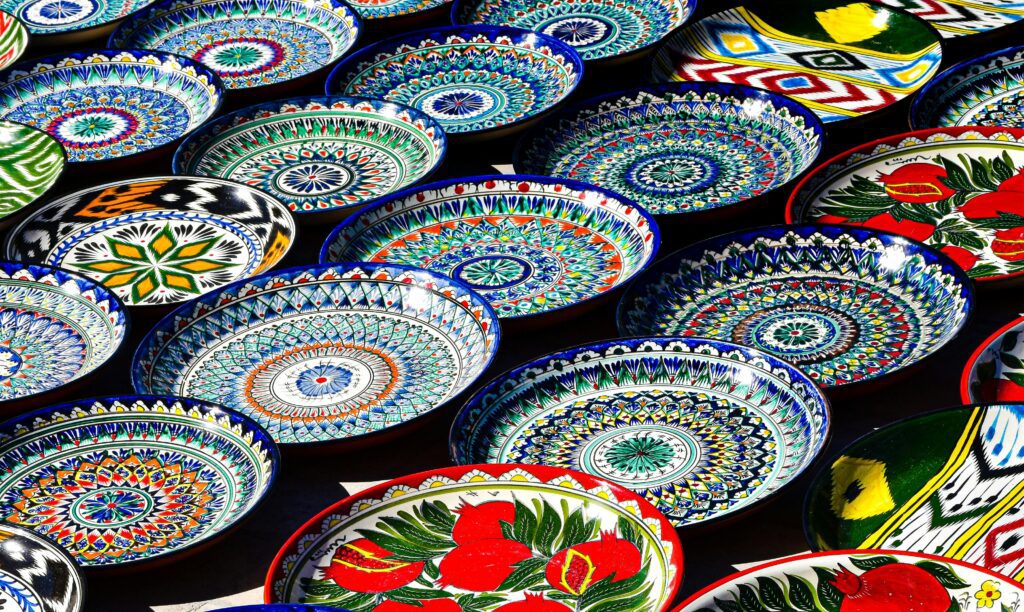
As compared to regular pottery, blue pottery is prepared with the help of quartz and glazed for strength.
Hand-painting method is utilized by artisans to ornament the ceramics with floral and geometric patterns. Vases, tiles, plates, and even doorknobs are made using this craft, which is one of the most popular renowned handicrafts of the state.
The employment of natural colors and the dramatic contrast of blue on white backgrounds render it classic.
Blue pottery is the epitome of tradition meeting innovation in Rajasthani arts & crafts.
Pitted against decline earlier, it has been brought back to life by government patronage and cooperatives of artisans, guaranteeing its place in homes today and in global markets.
3.2 Pichwai & Phad Paintings
Paintings are a part of Rajasthan Handicrafts par excellence, and two of the most renowned traditions are Pichwai and Phad.
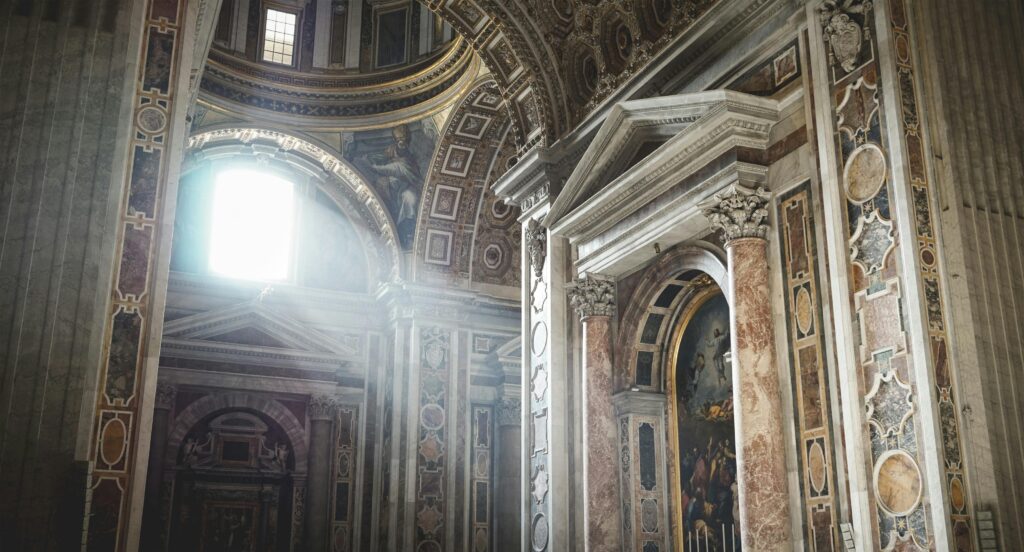
Pichwai paintings, which are from Nathdwara, are sacred paintings showing the life story of Lord Krishna, more specifically his incarnation as Shrinathji.
They are painted on cloth with fine detailing, usually placed behind idols at temples. The harmonious mix of bright colours, religious icons, and soft brushwork makes them one of Rajasthan’s renowned handicrafts.
Phad paintings, however, are Shahpura-based and are narrative scrolls that describe folk tales of gods such as Pabuji and Devnarayan.
These paintings are conventionally utilized by itinerant bards who unroll the scrolls while reciting stories to rural people.
Both Pichwai and Phad collectively symbolize the tradition of storytelling of Rajasthani arts & crafts, which combines religion, folklore, and art in an extremely unique manner.
3.3 Bandhani (Tie and Dye) Textiles
Textiles are a gem of Rajasthan Handicrafts, and Bandhani or Bandhej is perhaps the most well-known variety.
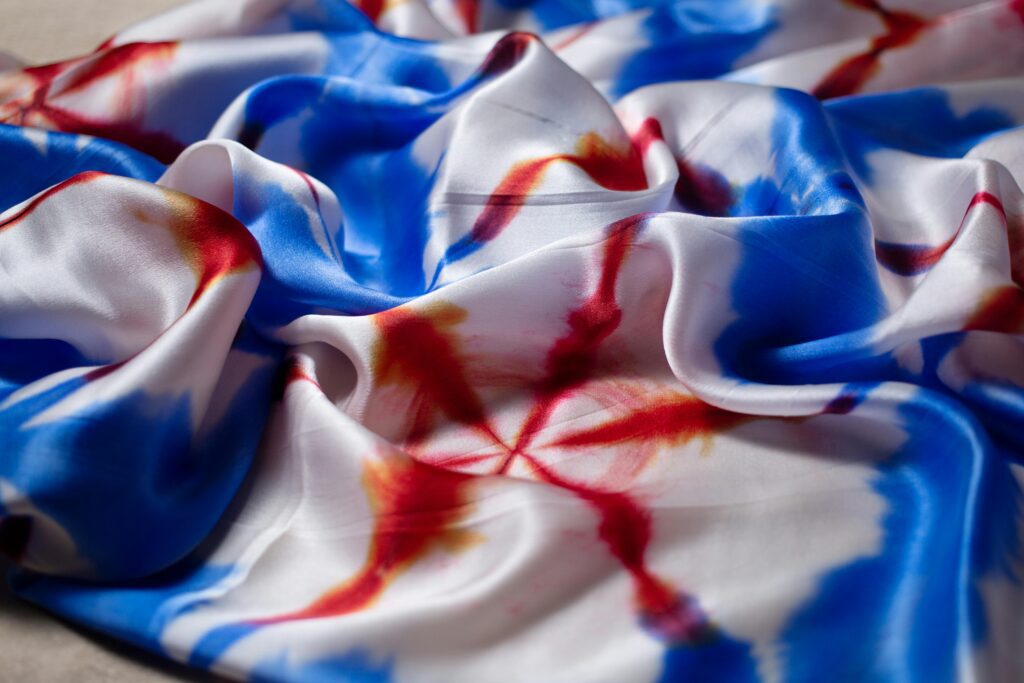
This tie-and-dye method includes tying fabric with threads and submerging it in natural dyes to produce elaborate patterns of dots, waves, and circles.
All the patterns have symbolic significance. For instance, the brides wear red, the color yellow is used to represent spring, and black and maroon prints are used during festivals.
Bandhani is employed in turbans, sarees, odhnis, and dupattas, so it is among the most renowned handicrafts of Rajasthan.
Bandhani art not only attracts attention with its looks but is also environmentally friendly, as it employs natural dyes. It shows how traditional arts & crafts evolve according to the occasion and customs.
3.4 Mojari (Traditional Rajasthani Footwear)
Shoes also find a niche in Rajasthan Handicrafts, with Mojari being the most sought-after type. The shoes are handmade from camel leather and adorned with multi-colored threads, beads, and zari work.
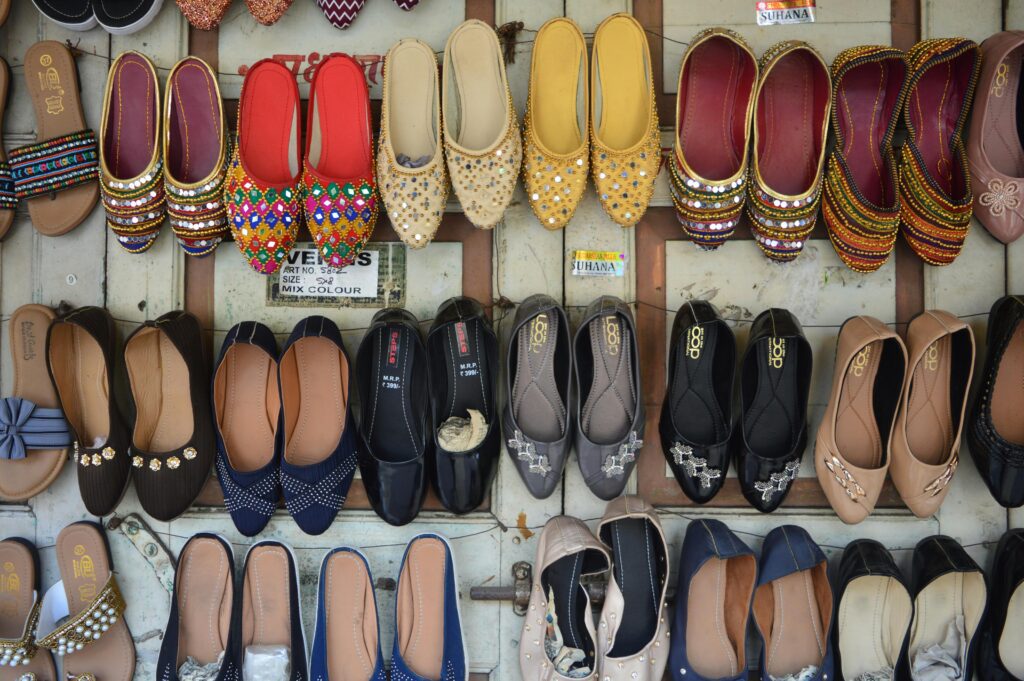
Mojaris have been traditionally used by kings and nobles in the past but are now widely used at wedding ceremonies and cultural festivals.
They are durable, comfortable, and elegant, which has earned them eternity. The motifs used in the mojaris tend to be from nature, like flowers, birds, and vines, thus connecting them with other Rajasthan arts & crafts.
Being one of the iconic handicrafts, Mojari has also received modern interpretations. Traditional craftsmanship is now combined with fashion by designers, preserving this heritage in international markets.
3.5 Marble Carvings and Sculptures
Marble carving symbolizes the opulence of Rajasthan Handicrafts. The state produces Makrana marble, which is renowned for being used in the construction of the Taj Mahal.
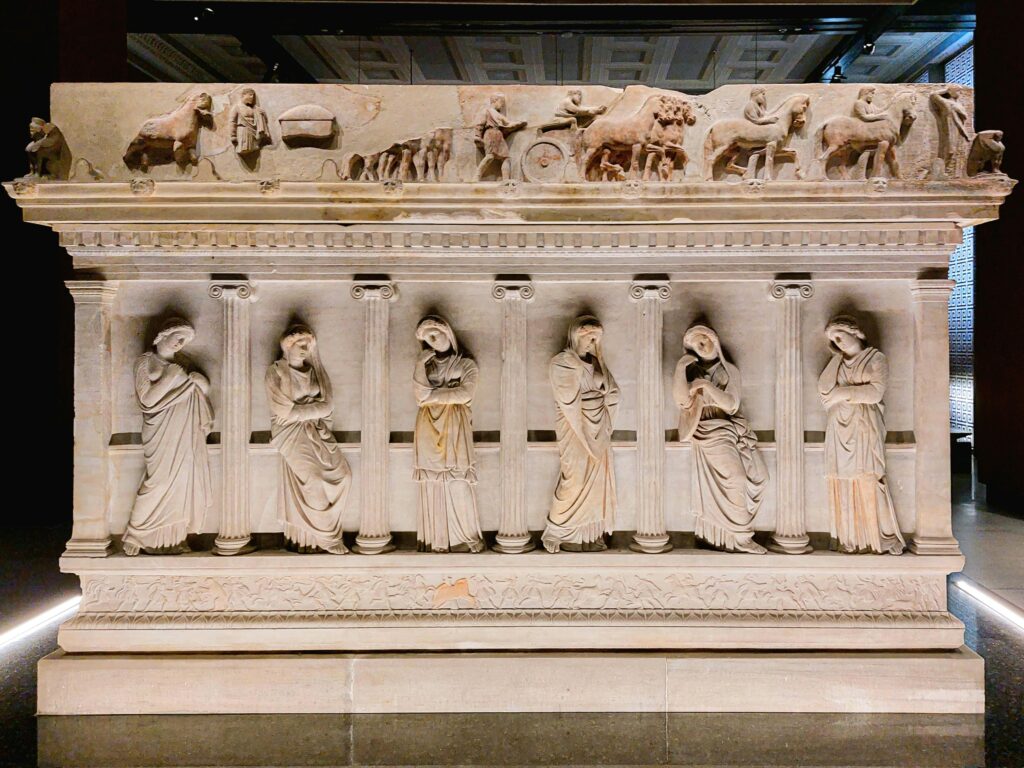
Marble is carved by artisans to become idols, tabletops, decorative panels, and temple buildings.
Detailed lattice craft (jali), flowers, and religious symbols are the hallmark of this craft. The Dilwara temples at Mount Abu are grand monuments of this craftsmanship, displaying how arts & crafts were incorporated into spirituality.
These marble works are not merely ornamental but also symbolic, symbolizing purity and piety. Their enduring popularity means marble carving continues to be one of Rajasthan’s renowned handicrafts.
3.6 Block Printing of Sanganer & Bagru
Textile printing is yet another specialty of Rajasthan Handicrafts, and Sanganer and Bagru are the two major centers. Workers employ wooden blocks with carved motifs to print patterns on fabrics.
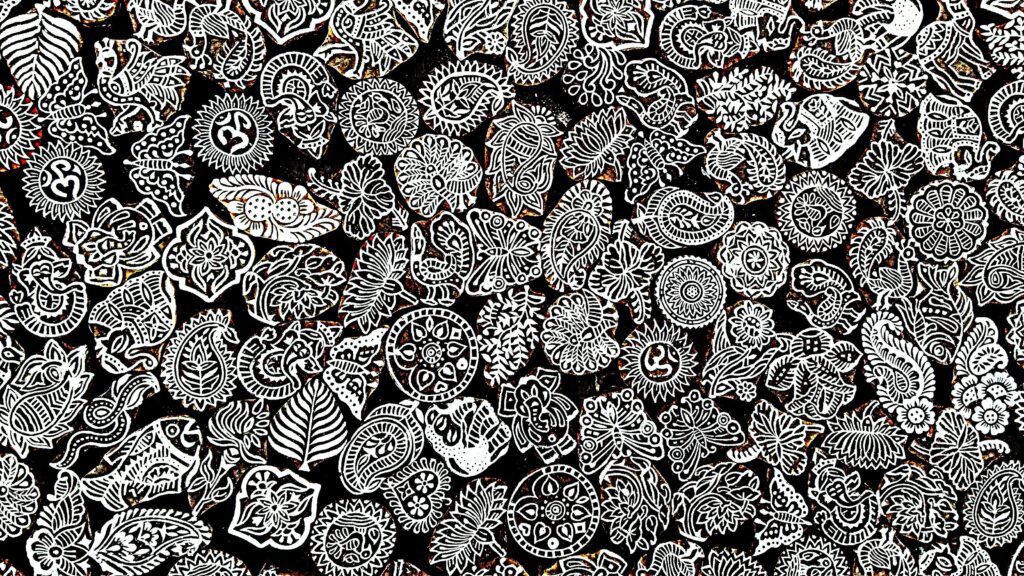
Sanganer prints have fine floral designs, while Bagru prints are renowned for their strong motifs and natural shades. Both employ natural dyes and techniques that have been in practice for centuries.
These block-printed materials are employed in sarees, bed coverlets, tablecloths, and clothing. Natural dyes’ sustainability contributes to their popularity, making them principal representatives of Rajasthani arts & crafts.
3.7 Thewa Art of Pratapgarh
Thewa is amongst the most distinctive Rajasthan Handicrafts, born in Pratapgarh. The process entails melting thin gold sheets over multicolored glass to shape complex designs.
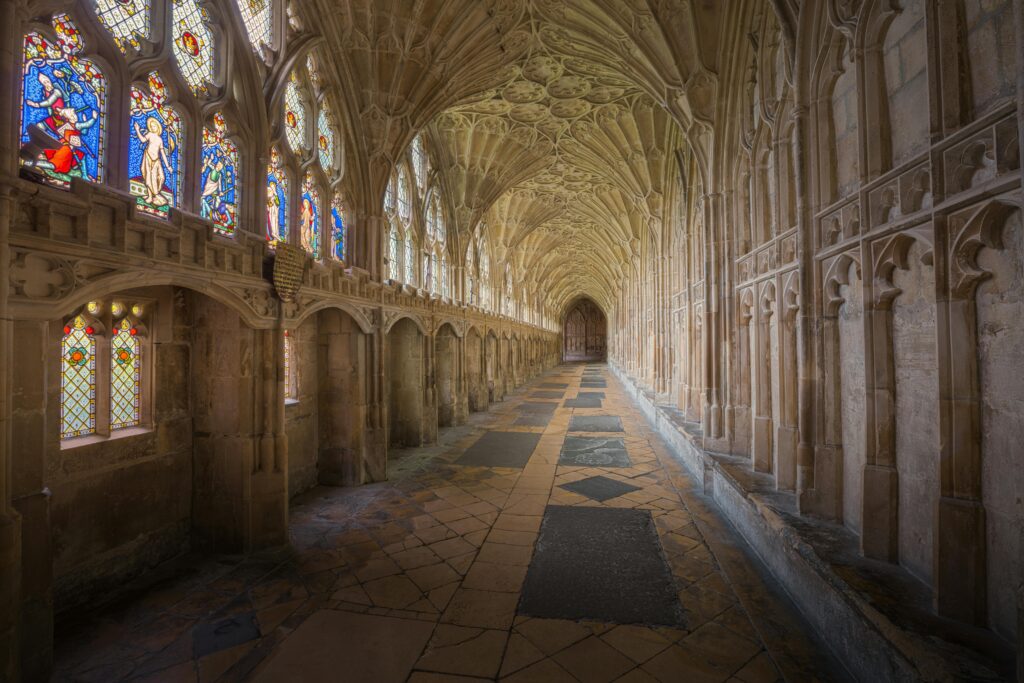
The patterns usually feature mythological tales, hunting scenes, or flower designs. Thewa is utilized mainly as jewelry like pendants, necklaces, and boxes. Its elitism and royal origins make it one of the renowned handicrafts coveted by collectors.
Thewa reflects the decadent aspect of Rajasthani arts & crafts, illustrating how artisans integrated precious material with unparalleled imagination.
3.8 Kundan and Meenakari Jewelry
Jewelry has been the hallmark of Rajasthan Handicrafts all along, with Kundan and Meenakari being renowned worldwide.
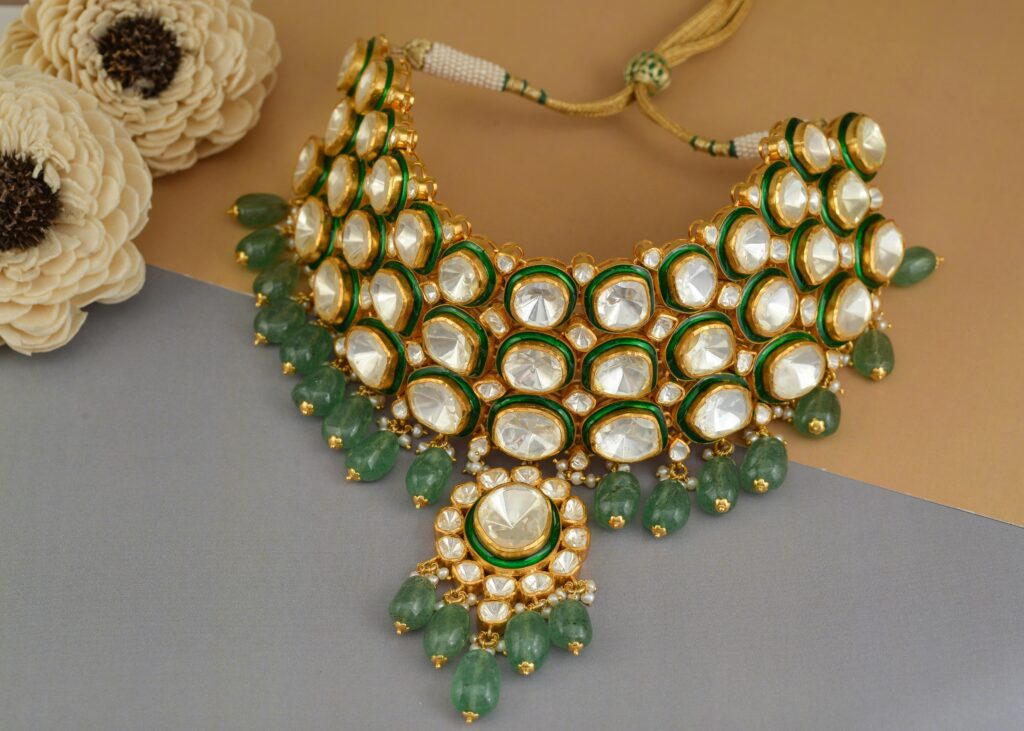
Kundan jewelry is the process of setting gemstones in their raw form into gold, shaping fantastic designs that were once worn by queens and nobles.
Meenakari, however, is the technique of enamel work, where color is filled into designs engraved on gold or silver.
These forms of jewelry continue to be sought after in weddings and festivals, representing the regal lineage of Rajasthan.
They depict the rich aspect of arts & crafts, rendering them one of the most renowned handicrafts of the world.
3.9 Wooden Handicrafts and Puppetry (Kathputli)
Wooden handicrafts constitute another class of Rajasthan Handicrafts. Wood is carved by craftsmen into furniture, ornaments, and toys.
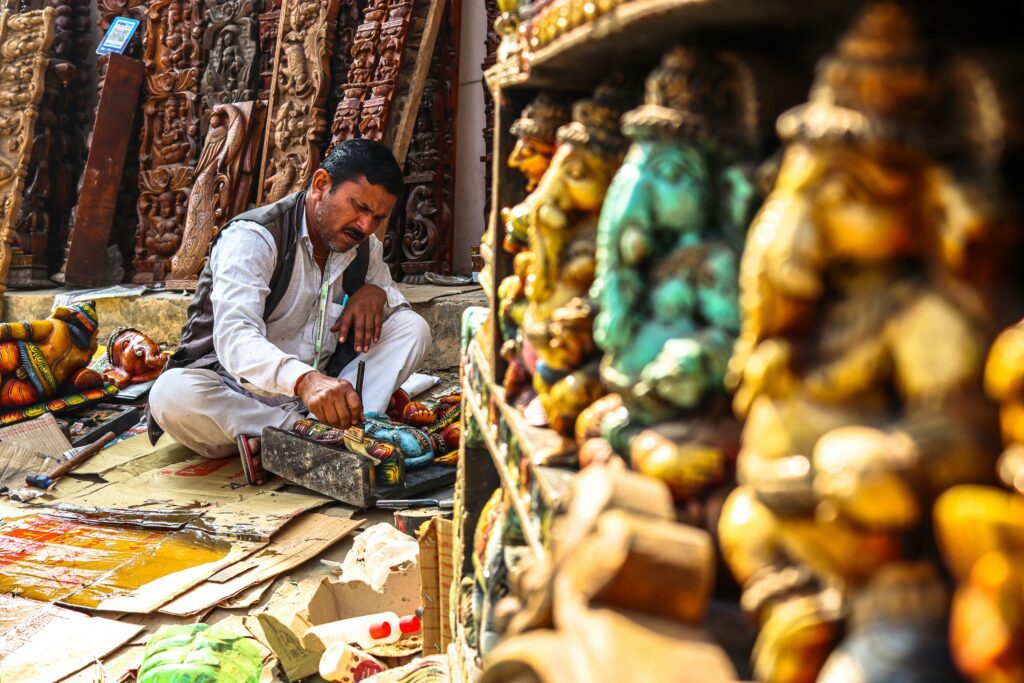
The art of puppetry, or Kathputli, is particularly renowned, where wooden puppets are attired in colorful clothes and utilized in folk performances.
Kathputli performances are not merely entertainment but also mediums of social and moral narrative. They are still a major crowd-puller in cultural fairs and tourist shows, thus becoming one of the popular handicrafts of Rajasthan.
The wooden arts & crafts are not only beautiful but also informative, keeping tales and traditions alive generation after generation.
3.10 Camel Leather Craft
Camel leather craft is one of the most distinctive and practical forms of Rajasthan Handicrafts, deeply rooted in the desert culture of the region.
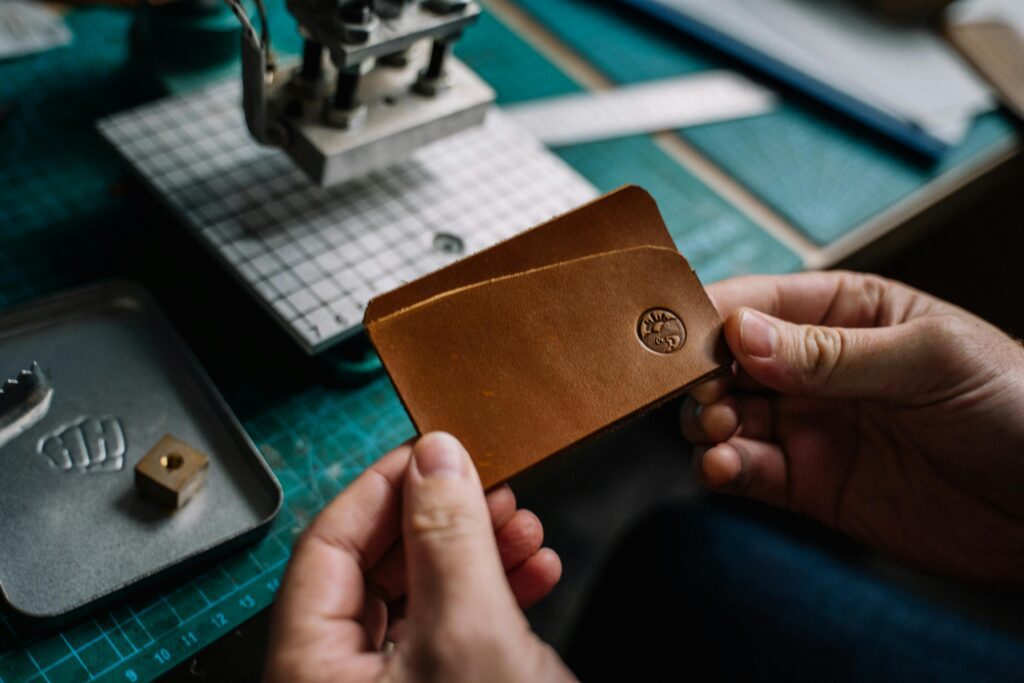
Given the arid terrain of Rajasthan, camels have been indispensable for transportation and livelihood, and artisans creatively transformed camel hides into durable, functional, and decorative items.
This craft is especially prominent in desert regions such as Jaisalmer, Bikaner, and Barmer, where camel-rearing is common.
The leather used in these crafts is soft yet strong, making it ideal for products that can endure rough use while maintaining their aesthetic appeal.
Artisans employ traditional tanning techniques to process the leather, ensuring that it is long-lasting and resistant to the harsh desert climate.
After tanning, the leather is hand-cut, stitched, embossed, or painted, reflecting the intricate arts & crafts tradition of Rajasthan.
One of the defining features of camel leather products is the embossed patterning. Artisans use hand-carved wooden stamps, metal tools, or freehand techniques to imprint designs inspired by Rajasthani motifs—floral vines, paisleys, desert landscapes, and royal insignia.
This makes each piece unique, turning ordinary objects into famous handicrafts cherished by locals and tourists alike.
Camel leather craft is not only appreciated for its beauty but also for its sustainability.
Unlike synthetic materials, camel leather is biodegradable and eco-friendly, reflecting Rajasthan’s traditional approach to resource use.
The craft also empowers local communities, providing steady income to artisans who continue to preserve these traditional techniques amidst modern industrial competition.
Why Rajasthan Handicrafts are Special
The uniqueness of Rajasthan Handicrafts lies in their ability to combine tradition with practicality. Unlike mass-produced goods, these creations are handmade, eco-friendly, and deeply rooted in cultural identity.
Every craft is not only skill but symbolism too. Bandhani clothes depict festive spirits, marble sculptures represent devotion, and puppetry has scintillating tales from folklore.
This association with everyday life, religion, and culture makes Rajasthani arts & crafts ageless.
Further, the diversity within popular handicrafts means that there is something special for each and every customer—be it jewelry, pottery, textiles, or furniture. Their scintillating appeal lies in authenticity, thus scintillating the world with their possession.
Where to Purchase Genuine Rajasthan Handicrafts
Shopping in Rajasthan’s bazaars is itself an experience. The roads are filled with stalls carrying vibrant textiles, pottery, and jewelry. Some of the foremost places to shop for Rajasthan Handicrafts are:
Johari Bazaar (Jaipur): Known for Kundan and Meenakari jewelry.
Hathi Pol (Udaipur): Renowned for miniature paintings and wooden arts & crafts.
Clock Tower Market (Jodhpur): A centre for textiles and camel leather products.
Sanganer and Bagru villages: Focal points for block-printed textiles.
Besides local bazaars, government emporia and craft fairs such as Shilpgram (Udaipur) and Surajkund Mela (Haryana) exhibit genuine renowned handicrafts of Rajasthan.
Rajasthan’s Handicraft Heritage Preservation
Though they find popularity worldwide, Rajasthan Handicrafts are under threat. Machine-based products, shifting consumer choices, and absence of marketing endanger traditional artisans.
Numerous young artisans leave their profession because of meager earnings and absence of recognition.
Efforts are underway to revive and conserve these arts & crafts. Government schemes, NGO projects, and online marketplaces are linking artisans with customers directly.
Training courses are also enabling artisans to convert designs into contemporary tastes without losing authenticity.
Conservation of renowned handicrafts is not merely an economic exercise but preserving cultural heritage. Every handmade piece is a testament to Rajasthan’s strength, piety, and ingenuity.
Conclusion
Rajasthan Handicrafts are far more than decorative items—they are living expressions of culture, history, and artistry.
Each handcrafted piece, whether it is a delicate miniature painting, vibrant Bandhani textile, exquisite Kundan jewelry, or durable camel leather product, carries with it centuries of skill, tradition, and royal patronage.
These crafts serve as a bridge between the past and present, connecting the ancient heritage of Rajasthan with modern tastes and global appreciation.
The diversity within Rajasthan Handicrafts is extraordinary. From the blue pottery of Jaipur to the marble carvings of Mount Abu, from intricate block-printed fabrics to the whimsical charm of Kathputli puppets, each craft embodies a unique story.
They are not just objects of beauty; they are functional, sustainable, and deeply intertwined with the cultural and social life of the region.
What makes these famous handicrafts truly special is the human touch. Every stitch, brushstroke, carving, or imprint represents hours of dedication by artisans who have inherited these skills through generations.
This craftsmanship cannot be replicated by machines, which makes Rajasthan Handicrafts not only rare but also invaluable in a rapidly modernizing world.
Moreover, these crafts contribute significantly to the livelihoods of thousands of families and communities across Rajasthan.
Supporting and preserving them is therefore not only about celebrating heritage but also about sustaining the economic and social fabric of the region.
Government initiatives, NGO support, and modern marketing platforms have begun to empower artisans, ensuring that these arts & crafts continue to thrive in contemporary markets.
For art enthusiasts, collectors, and cultural explorers, Rajasthan Handicrafts offer a unique opportunity to experience the soul of the state.
Each craft is a window into Rajasthan’s royal heritage, reflecting centuries of creativity, devotion, and aesthetic brilliance.
By cherishing and promoting these famous handicrafts, we ensure that the legacy of Rajasthan’s artisans endures, inspiring generations to come and keeping the vibrant spirit of the desert kingdom alive.
In essence, Rajasthan Handicrafts are not just souvenirs or decorative items—they are cultural ambassadors.
They tell the story of a land that has long celebrated beauty, skill, and creativity. Appreciating these arts & crafts means honoring the hands, hearts, and histories of the artisans who make Rajasthan a true hub of artistic excellence.
